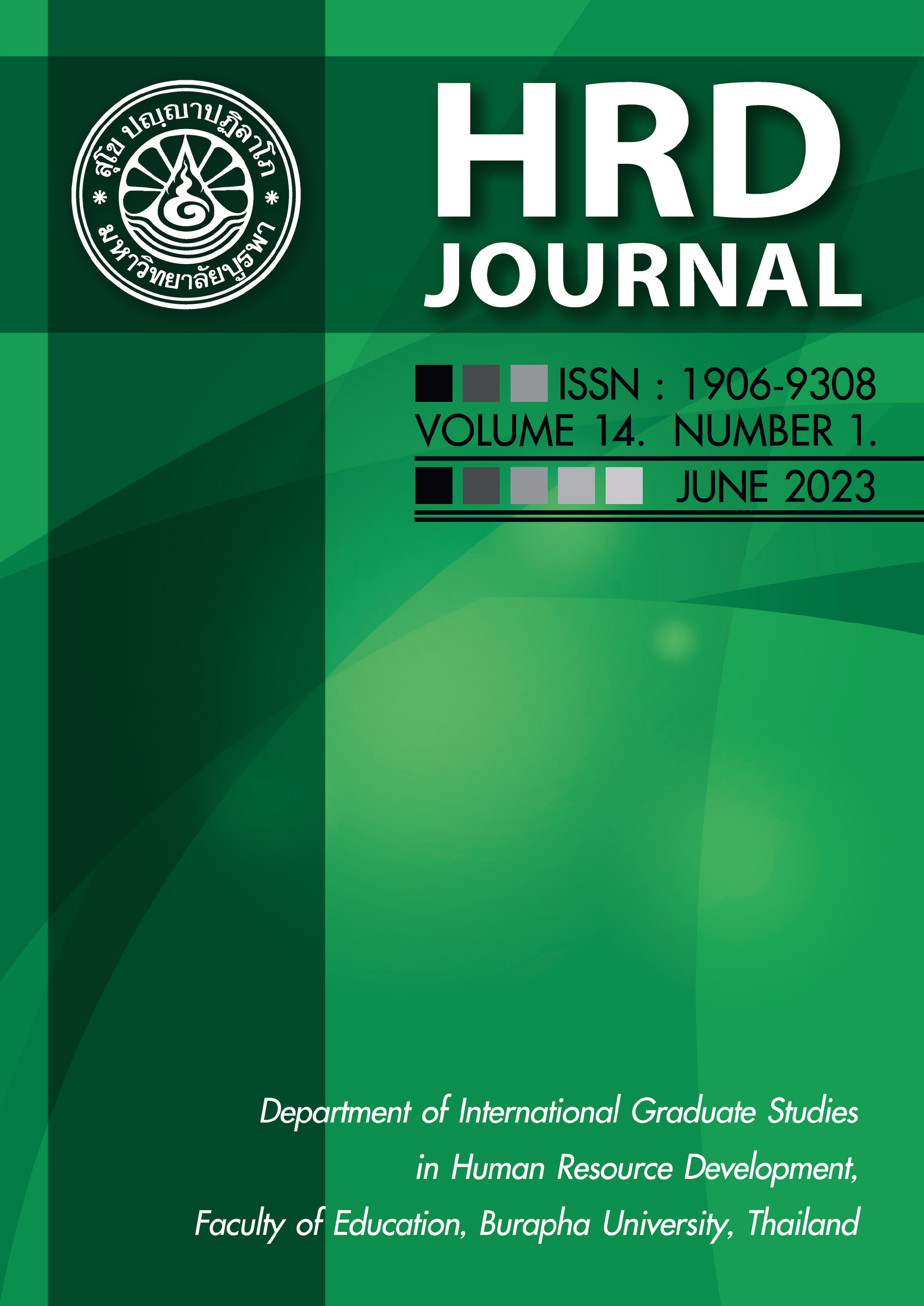(Knowledge Management on Group Management According to Creative Economy Concept to Create added value for Samakkee Organic Farming Community Enterprise Group in MaeFahLuang Sub-district MaeFahLuang District Chiang Rai Province)
Keywords:
Knowledge Management, Management, Creating Added ValueAbstract
The objectives of this study were to manage Community Enterprise Group knowledge and concepts, as well as to add value to agricultural wastes from the Samakkhi Organic Agriculture Community Enterprise, MaeFahLuang Sub-district Farm. Data were collected from 20 leaders and group members, as well as from community members and government officials, using interview forms, group discussion guidelines, and workshops. The data was analyzed by content analysis. The results showed that:
Knowledge management in the group aimed to manage knowledge from the group leader, who has the knowledge to produce organic fertilizer tablets and add the necessary knowledge to be used in his own agricultural plots and among his members. The goal was to reduce the use of chemical fertilizers, reduce production costs, and reduce the burning of agricultural waste, which affects the health and environment in the community. Therefore, the concept of increasing the value of agricultural waste was used to make organic fertilizer pellets for use in production and products for sale in the community and nearby communities. Regarding the management of the group, it aimed to produce organic fertilizers for members to use in agricultural fields. Take note of the changes that have occurred to share and learn together. There was a clearly defined group office to establish an organizational structure. In addition, the group committee determined the direction of the group, defined group products, controlled activities, and scheduled a meeting to exchange knowledge on the production system and identify problems and obstacles to achieving the goal of becoming an organic community in the future.
References
กรมส่งเสริมการเกษตร. (2563). ความสำคัญของการสร้างมูลค่าเพิ่มสินค้าเกษตร. สืบค้นเมื่อวันที่ 5 มีนาคม 2565, เข้าถึงได้จาก
http://www.sceb.doae.go.th/ความสำคัญของการสร้างมูลค่าเพิ่มสินค้าเกษตร.pdf
จรินรัตน์ วรวงศ์พิทักษ์ และฟาริดา เอ็ลลาฮี. (2563). รูปแบบการบริหารจัดการกลุ่มผลิตภัณฑ์จักสานจากเตยหนามอย่างยั่งยืนชุมชนบ้านพงบูโล๊ะ ตำบลสะเตงนอก อำเภอเมือง จังหวัดยะลา. วารสารการบัญชีและการจัดการ มหาวิทยาลัยมหาสารคาม, 12(4), 55-66.
จุฬามณี แก้วโพนทอง ทรงพล โชติกเวชกุล ปัญญา คล้ายเดช และพระสุนทร ชำกรม. (2561). การบริหารจัดการชุมชนเพื่อความยั่งยืน. วารสารวิชาการธรรมทรรศน์, 18(1), 263-273.
ชนนิกานต์ อินทรเผือก, ประเพศ ไกรจันทร์ และ ทวีศักดิ์ รูปสิงห์. (2564). รูปแบบการจัดการวิสาหกิจชุมชนเพื่อการเติบโตอย่างยั่งยืน. วารสารวิชาการคุรุอุตสาหกรรม พระจอมเกล้าพระนครเหนือ, 12(2), 46-56.
บุญดี บุญญากิจ, นงลักษณ์ ประสพสุขโชคชัย, ดิสพงศ์ พรชนกนาถ และปรียวรรณ กรรณล้วน. (2549). การจัดการความรู้จากทฤษฎีสู่การปฏิบัติ. สถาบันเพิ่มผลผลิตแห่งชาติ: ซีเอ็ดยูเคชั่น.
ราชบัณฑิตยสถาน. (2551). พจนานุกรมศึกษาศาสตร์ ฉบับราชบัณฑิตยสถาน พ.ศ.2551. กรุงเทพฯ: อรุณ.
ศุภชัย เหมือนโพธิ์ และธีรศักดิ์ อุ่นอารมย์เลิศ. (2561). การพัฒนาศักยภาพผู้ประกอบการชุมชน ตามแนวคิดเศรษฐกิจสร้างสรรค์. วารสารศิลปากรศึกษาศาสตร์วิจัย, 10(1), 113-144.
สำนักงานคณะกรรมการพัฒนาระบบราชการ. (2566). การจัดการความรู้ (Knowledge Management: KM) กับการบริหารราชการสมัยใหม่. สืบค้นเมื่อวันที่ 18 มีนาคม 2566, เข้าถึงได้จาก http://www.dla.go.th/work/km/home/kmstory/kmstory4.htm
สำนักงานคณะกรรมการพัฒนาเศรษฐกิจและสังคมแห่งชาติ. (2559). สรุปสาระสำคัญแผนพัฒนาเศรษฐกิจและสังคมแห่งชาติ ฉบับที่สิบสอง พ.ศ. 2560-2564. กรุงเทพฯ: สำนักงานคณะกรรมการพัฒนาเศรษฐกิจและสังคมแห่งชาติสำนักนายกรัฐมนตรี.
สำนักงานส่งเสริมเศรษฐกิจสร้างสรรค์. (2566). เศรษฐกิจสร้างสรรค์ คืออะไร. สืบค้นเมื่อวันที่ 18 มีนาคม 2566, เข้าถึงได้จาก https://www.cea.or.th/th/about
อรทัย แสงทอง. (2558). การบริหารจัดการกลุ่มสัจจะออมทรัพย์เพื่อสวัสดิการชุมชนอย่างยั่งยืนในเขตจังหวัดภาคใต้. (วิทยานิพนธ์ปริญญาดุษฎีบัณฑิต). ปทุมธานี: มหาวิทยาลัยราชภัฏวไลยอลงกรณ์ ในพระบรมราชูปถัมภ์.
อาทิยา แปลงใจ และณรงค์ ศิริดล. (2561). ความเข้มแข็งของกลุ่มเกษตรกรผู้เลี้ยงสัตว์รายย่อยในพื้นที่จังหวัดชัยภูมิ. เอกสารวิชาการสำนักงานปศุสัตว์จังหวัดชัยภูมิ อำเภอเมืองชัยภูมิ จังหวัดชัยภูมิ.
อุรัชชา สุวพานิช. (2560). เป้าหมายของการจัดการความรู้. สืบค้นเมื่อวันที่ 15 กุมภาพันธ์ 2566, เข้าถึงได้จาก https://erp.mju.ac.th/acticleDetail.aspx?qid=669
Hodgetts, R. M. (1992). Management: Theory, process and practice (5th ed). New York: McGraw-Hill.
Howkins, J. (2001). The Creative Economy: How People Make Money from Ideas. London: Penguin Books Ltd,.
Nonaka, I. and H. Takeuchi. (1995). The Knowledge creating company: how Japanese companies create the dynamics of innovation. New York, Oxford University Press.
Schermerhorn. J. R. (1999). Management (5th ed.). USA: John Wiley and Sons.
Downloads
Published
How to Cite
Issue
Section
License
Copyright (c) 2023 Department of International Graduate Studies in Human Resource Development, Faculty of Education, Burapha University

This work is licensed under a Creative Commons Attribution-NonCommercial-NoDerivatives 4.0 International License.
Copyright@HRD Journal, Burapha University






